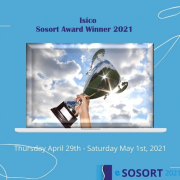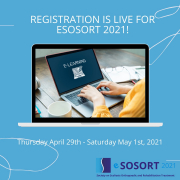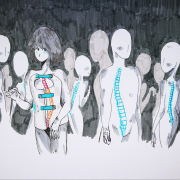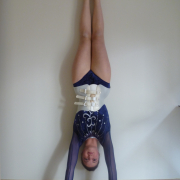Isico, too will be present with several presentations at the annual international conference Sosort, online from April 29th to May 1st.
A presence, albeit virtual, characterized by the possibility of competing again for the SOSORT Award. We recall that Isico has been awarded already in the last two years the prestigious international recognition given by SOSORT for the best research, to which is added, in 2019, the Award won as co-authors of a research study in collaboration with the University of Hong Kong.
“In this online edition, our study Efficacy of bracing in infantile scoliosis. A 4-years prospective cohort shows that idiopathic respond better than secondary scoliosis will compete for the Award along with six other studies – explains Prof Stefano Negrini, scientific director of Isico and first author of the research – an important result that recognizes the high quality of the research we are performing in Isico. Also, the study Adults with idiopathic scoliosis: progression over 5 Cobb degrees is predicted by menopause and metabolic bone disease, which sees as first author Dr Sabrina Donzelli (who won the Award in 2020) was nominated among the 7 best research studies: Dr. Donzelli will hold the presentation but will not compete for the Award this year.”
In addition, another study, Increasing Brace Comfort, Durability and Sagittal Balance through Semi-rigid Pelvis Material does not change Short-Term Very-Rigid Sforzesco Brace Results, is among those selected for the Podium presentation and will be presented during the event by Dr Francesco Negrini, an Isico physiatrist.
Isico also distinguished itself for the works accepted as Posters, available to subscribers to the event in an on-demand session, and they are three: Can the tilt-differences of limiting vertebrae be a prognostic factor for the worsening of the scoliosis curves treated with specific exercises? A pilot study using a series of matched patients, edited by our director of physiotherapy, Michele Romano, Reducing the pelvis constriction changes the sagittal plane in the brace. A retrospective case-control study of 37 free-pelvis vs 336 classical consecutive very-rigid Sforzesco braces and The modular MI-brace is as effective as the classical custom-made Sforzesco brace. A matched case-control study of 120 consecutive high-degree female AIS, both from Prof Stefano Negrini.
This year’s virtual meeting will begin with synchronous (live) presentations on Thursday, April 29th and Friday, April 30th, from 9 am to 11 am Eastern Time, and on Saturday, May 1st, from 9 am to 1 pm Eastern Time.
All the presentations will be recorded and be made available on-demand for a duration of 1 year on the SOSORT conference website for registered participants. For more information and registration, visit the event website https://esosort21.sosort.org










